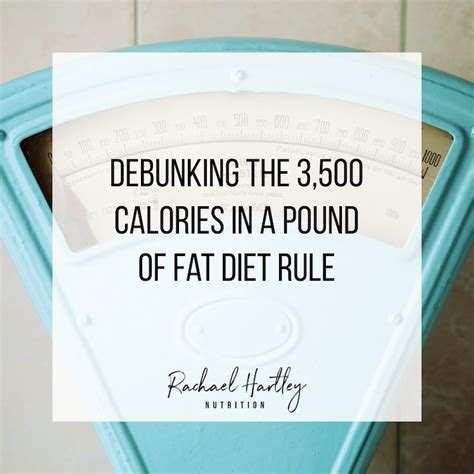Debunking the 3,500-Calorie-per-Pound Rule
How many fewer calories do you have to eat every day to lose one pound of body fat? The first surgical attempt at body sculpting […]

How many fewer calories do you have to eat every day to lose one pound of body fat?
The first surgical attempt at body sculpting was in 1921 on a dancer “who wanted to improve the shape of her ankles and knees.” The surgeon apparently scraped away too much tissue and tied the stitches too tight, resulting in necrosis, amputation, and the first recorded malpractice suit in the history of plastic surgery. Liposuction is much safer today, killing only about 1 in 5,000 patients, mostly from unknown causes, such as throwing a clot into your lung or perforating your internal organs. You can see a “Cause of Death” chart below and at 0:37 in my video The 3,500 Calorie per Pound Rule Is Wrong.
Liposuction currently reigns as the most popular cosmetic surgery in the world, and its effects are indeed only cosmetic. A study published in the New England Journal of Medicine assessed obese women before and after having about 20 pounds of fat sucked out of their bodies, resulting in a nearly 20 percent drop in their total body fat. Normally, if you lose even just 5 to 10 percent of your body weight in fat, you get significant improvements in blood pressure, blood sugars, inflammation, cholesterol, and triglycerides. But liposuction sucks. None of those benefits materialized even after massive liposuction, which suggests that the problem is not subcutaneous fat, the fat under our skin. The metabolic insults of obesity arise from the visceral fat, the fat surrounding or even infiltrating our internal organs, like the fat marbling our muscles and liver. The way you lose that fat, the dangerous fat, is to take in fewer calories than you burn. Anyone who’s seen The Biggest Loser television programs knows that with enough caloric restriction and exercise, hundreds of pounds can be lost. Similarly, there are cases in the medical literature of what some refer to as “super obesity.” In one case, a man lost a massive amount of weight “largely without professional help and without surgery” and kept it off for years. He dropped 374 pounds, losing about 20 pounds a month by cycling two hours a day and reducing his daily intake to 800 calories, which is down around what some prisoners got at concentration camps in World War II. Perhaps “America’s most celebrated weight loss” seen on television was Oprah’s. She pulled out a wagon full of fat, representing the 67 pounds she had lost on a very-low-calorie diet. How many calories did she have to cut to achieve that weight loss within four months? If you consult with leading nutrition textbooks or refer to trusted authorities like the Mayo Clinic, you’ll learn the simple weight loss rule: 1 pound of fat equals 3,500 calories. Quoting from the Journal of the American Medical Association, “A total of 3500 calories equals 1 pound of body weight. This means if you decrease (or increase) your intake by 500 calories daily, you will lose (or gain) 1 pound per week. (500 calories per day × 7 days = 3500 calories.)” It’s the simple weight-loss rule that is simply not true. The 3,500-calorie rule can be traced back to a paper published in 1958. The author noted that since fatty tissue in the human body is 87 percent fat, a pound of body fat would have about 395 grams of pure fat. Multiplying that by nine calories per gram of fat gives you that “3,500 calories per pound” approximation. The fatal flaw that leads to “dramatically exaggerated” weight-loss predictions is that the 3,500-calorie rule fails to take into account the fact that changes in the Calories-In side of the energy-balance equation automatically lead to changes in the Calories-Out side—for example, metabolic adaption, the slowing of metabolic rate that accompanies weight loss. That’s one reason weight loss plateaus. Imagine a sedentary, 30-year-old woman of average height who weighs 150 pounds. According to the 3,500-calorie rule, if she cuts 500 calories out of her daily diet, she’d lose a pound a week or 52 pounds a year. In three years, she would vanish. She’d go from 150 pounds to -6. Obviously, that doesn’t happen. Instead, as you can see in the graph below and at 4:33 in my video, in the first year, she’d likely lose 32 pounds, not 52. Then, after a total of three years, she’d probably stabilize at about 100 pounds. This is because it takes fewer calories to exist as a thin person.
Part of it is “simple mechanics”: More energy is required to move a heavier mass, in the same way a Hummer requires more fuel than a compact car. Think how much more effort it would take to just get up from a chair, walk across the room, or climb a few stairs if you were carrying a 50-pound backpack. Even when you’re at rest, sound asleep, there’s simply less of your body to maintain as you lose weight. Every pound of fat tissue lost may mean one less mile of blood vessels through which your body has to pump blood every minute. So, the basic upkeep and movement of thinner bodies take fewer calories. As you lose weight by eating less, you end up needing less. That’s what the 3,500-calorie rule doesn’t take into account. Imagine it another way: A 200-pound man starts consuming 500 more calories a day, maybe by drinking a large soda or eating two donuts. According to the 3,500-calorie rule, in ten years, he’d weigh more than 700 pounds. That doesn’t happen because, the heavier he is, the more calories he burns just by existing. If you’re 100 pounds overweight, it’s as if there’s a skinny person inside you trying to walk around balancing 13 gallons of oil or lugging around a sack filled with 400 sticks of butter. As you can see in the graph below and at 6:13 in my video, it takes about two donuts’ worth of extra energy just to live at 250 pounds, so that’s where you’d plateau if you kept it up. Given a certain calorie excess or deficit, weight gain or weight loss is a curve that flattens out over time, rather than a straight line up or down.
Nevertheless, the 3,500-calorie rule continues to crop up, even in obesity journals. Public health researchers used it to calculate how many pounds children might lose every year if, for example, fast-food kids’ meals swapped in apple slices for french fries. You can see the “Counting Calories in Kids’ Meals” graphic below and at 6:39 in my video.
They figured that two meals a week could add up to about four pounds a year. The actual difference, National Restaurant Association–funded researchers were no doubt delighted to point out, would probably add less than half a pound—ten times less than the 3,500-calorie rule would predict, as you can see below and at 7:06 in my video. That original article was subsequently retracted.
The 3,500 Calorie per Pound Rule Is Wrong is the first of 14 videos that are part of my fasting series, about which I did two webinars. The videos are on NutritionFacts.org, or you can get them all now in a digital download at Intermittent Fasting. You may also be interested in my webinars on Fasting and Disease Reversal and Fasting and Cancer.
Other videos in this series are included in related videos below. Check out some other popular videos on weight loss.
I also recently tackled the ketogenic diet.

 mainadmin
mainadmin 










